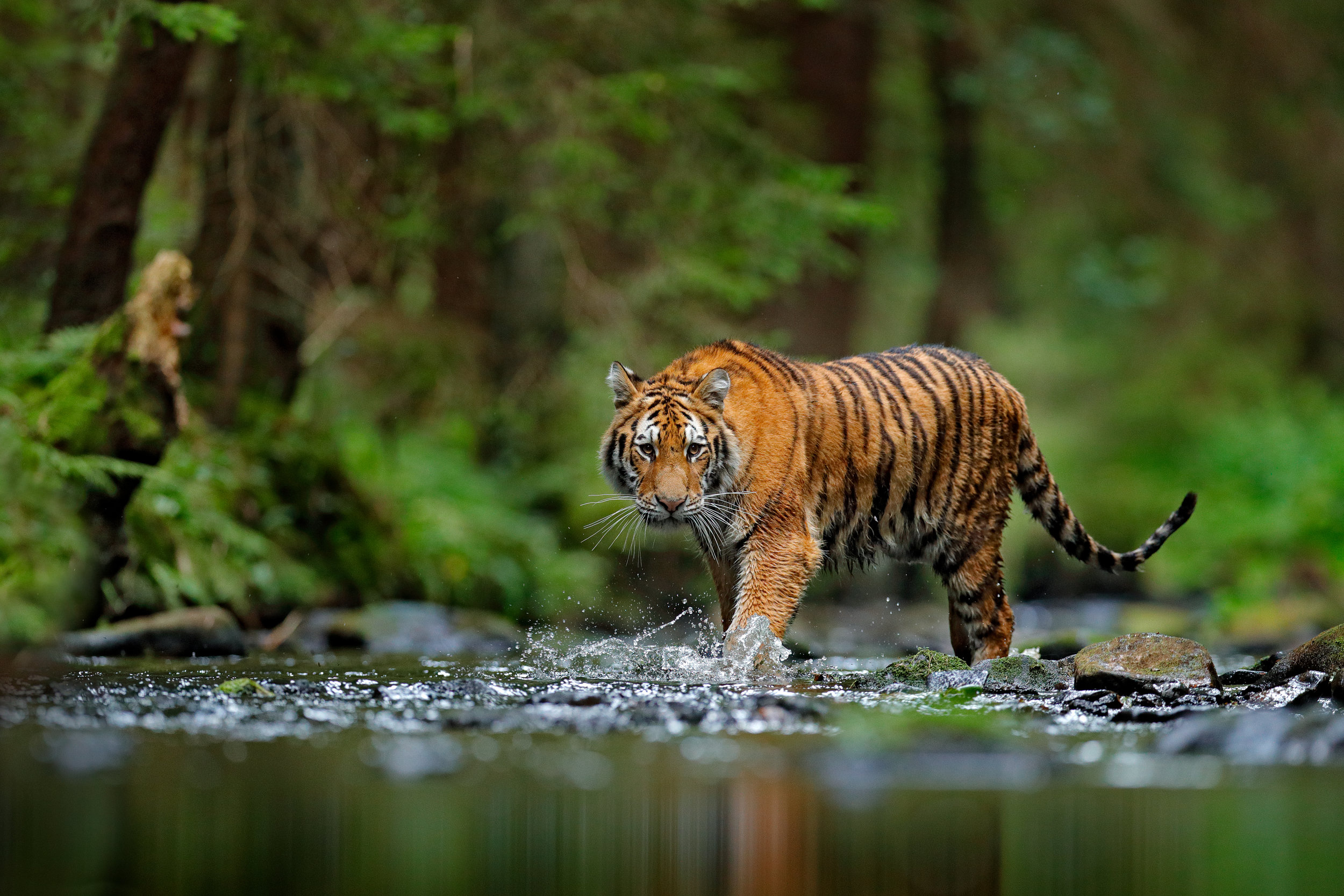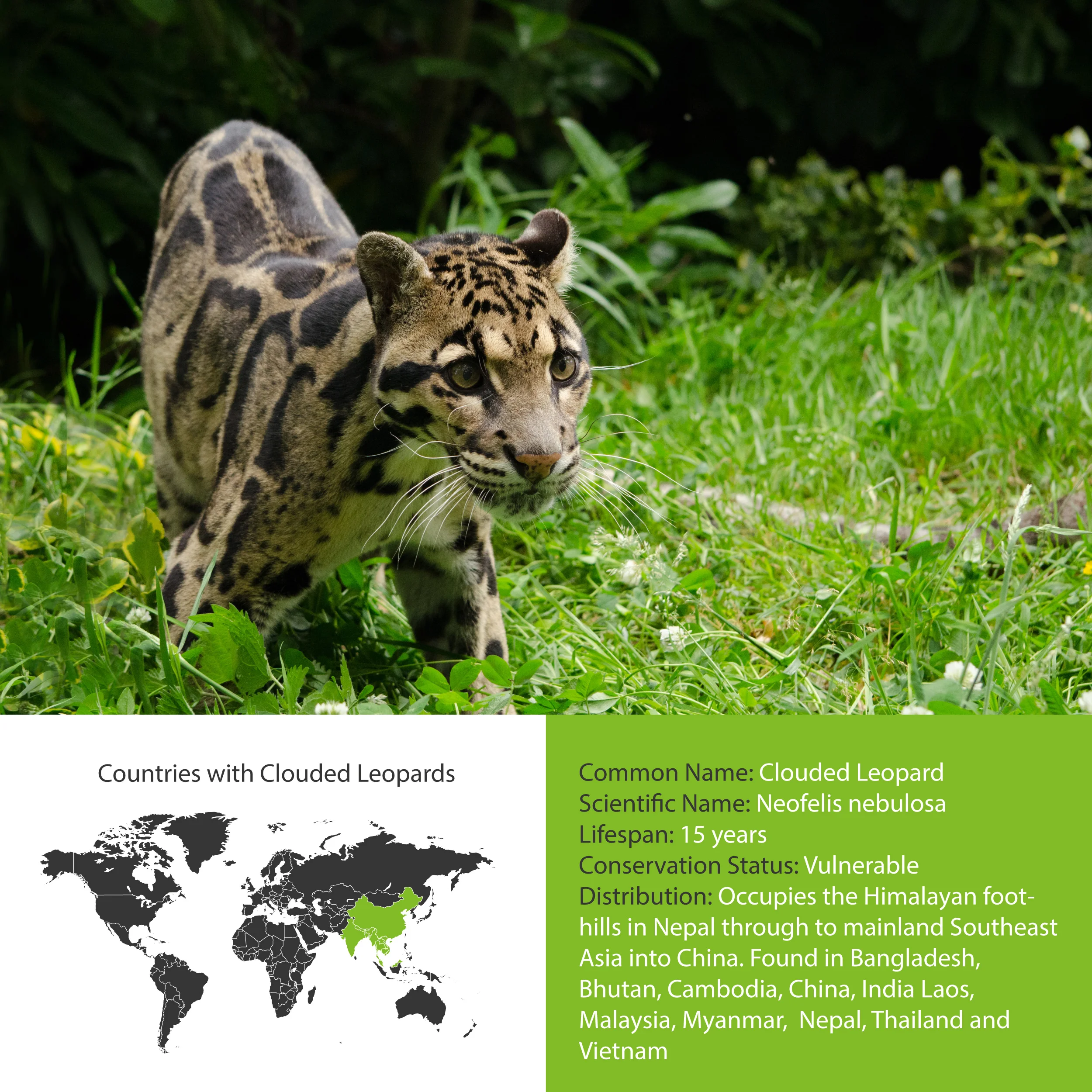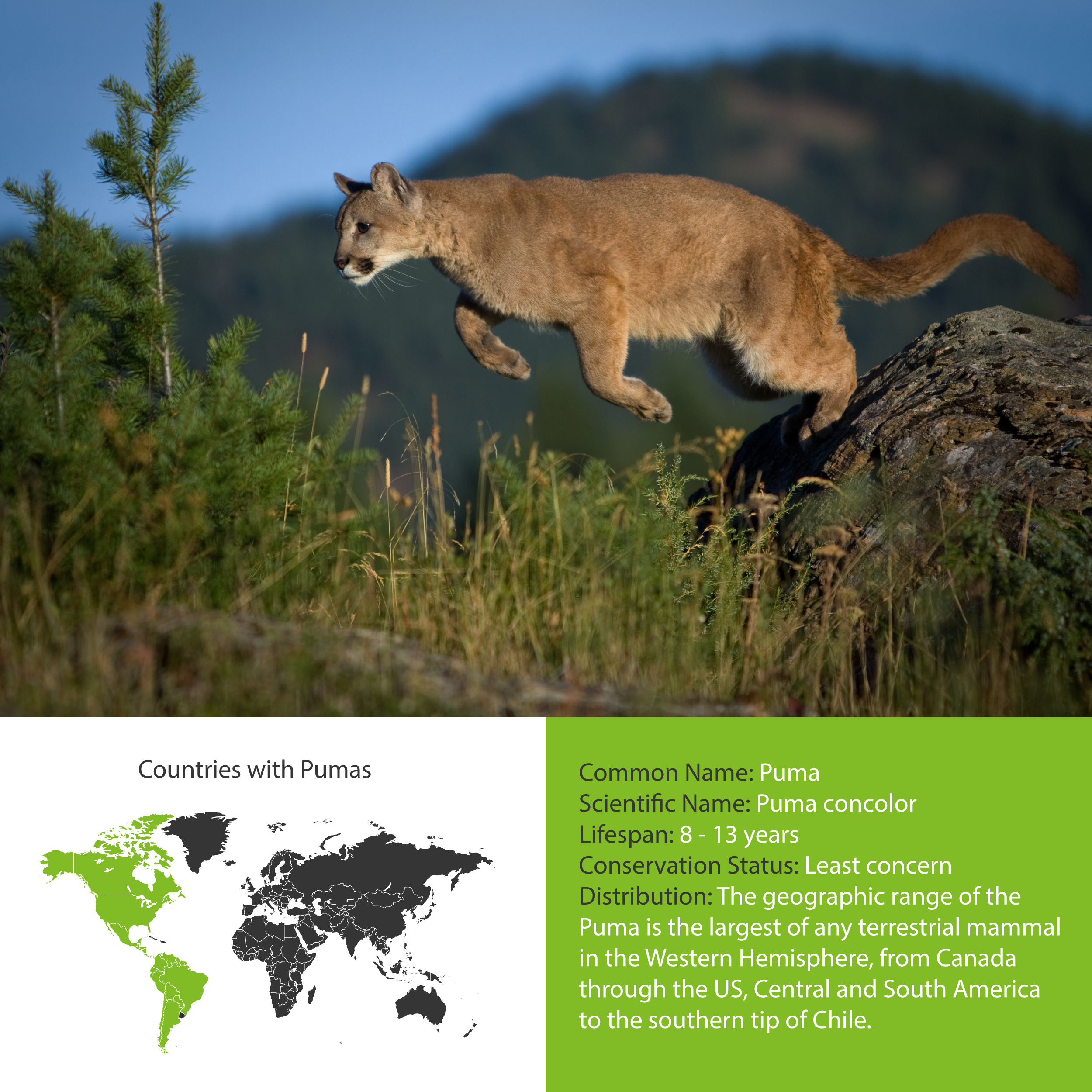Occupying every continent except Antarctica and Oceana, the big cats are revered among zoologists and general animal enthusiasts alike for their power, agility and grace. From the “King of the beasts” (lion) to “He who kills with one leap” (Jaguar), we take a closer look at the majestic felines that prowl the forests, deserts, plains and savannahs around the globe.
Lion
The Lion is not only one of the most iconic of all big cat species, but perhaps one of the most familiar creatures on the planet. Once widespread throughout Africa, Asia and Southwestern Europe, numbers of this magnificent symbol of Africa have decreased drastically over the past century due to habitat loss, fragmentation, and human-wildlife conflict. In fact, their number has declined from around a whopping 400,000 in the 1950s to about 20,000 individuals today. One of the largest in the feline family (second only to the tiger), African Lions can only be found today in sub-Saharan Africa with 80% situated in eastern and southern Africa. One of the highest concentrations of these majestic animals lies in Ngorogoro Crater in the Serengeti National Park, Tanzania. The endangered Asiatic Lion occupies only one forest in India, but thanks to large conservation efforts, their numbers are steadily increasing. Once on the brink of extinction, their population is now estimated at more than 600 individuals.
Jaguar
Solitary, elusive, and outrageously beautiful, the Jaguar is the largest native feline to roam the Americas. They can be found mostly in large areas of tropical rainforests close to riverbanks where they typically hunt their prey which includes capybara, peccary and caiman. Over the past 50 years, the world’s Jaguar population has dropped by more than half due to many factors including habitat fragmentation, illegal poaching and conflict with humans. Unfortunately, in Latin American countries their numbers have dwindled to below 16,000, making them a critically endangered species in natural spaces based in regions from Mexico down to Argentina. Spotting a wild Jaguar is no easy feat, but the best chances of doing so are along the riverbanks of the Brazilian Pantanal.
Snow Leopard
Known by many as the “Ghost of the mountains”, the Snow Leopard is the rarest and most elusive of all the big cats. Prowling the high-altitude mountain ranges of central Asia, the mysterious Snow Leopard is evolved perfectly for its cold and snowy habitat. Sporting a white-grey coat with black rosettes, they blend superbly well to their surrounding rocky sloped environment, making them stealthy hunters. Despite their IUCN listing changing from endangered to vulnerable in the past year, many conservation organizations argue that the species still requires urgent attention if they are to be saved from the jaws of extinction. Scientists now estimate their numbers at somewhere between 3,920 and 6,390 individuals. Due to their low numbers, elusive nature, and excellent camouflage, spotting a wild snow leopard can be extremely difficult, but most sightings tend to occur in the serene and picturesque Hemis National Park in India.
Tiger
The largest of all the world’s big cats, the Tiger has been divided into many different subspecies – six of which are extant (Siberian, Malayan, Indochinese, Sumatran, Bengal, and South China). According to the WWF, only 3,890 wild tigers walk the Earth today, making these beautiful solitary predators the most endangered of all the big cats. The Tigers distribution range spans from Siberia down to Sumatra, with most of the planet’s remaining individuals occurring in national parks located in central and northern areas of India. Due to its high density of Tigers, Bandhavgarh National Park is probably the best place to spot one of these magnificent creatures in the wild, with most visitors having a sighting within a day or two of touring the park.
Cheetah
Graceful, slender and claiming the title of fastest land animal, the Cheetah is truly one of the planet’s most magnificent animals. Their refined body is built for speed and aerodynamics giving Cheetahs both advantages and disadvantages in regard to predation. While their specialized anatomy allows them to reach speeds of up to 60 mph to catch their prey, their muscle mass and strength if far inferior to that of lion, leopard and hyena of which they often lose their kill to. For this reason, Cheetah are diurnal animals as opposed to their three formidable competitors – all of which are predominantly nocturnal. Sadly, Cheetah populations have declined from around 100,000 in the early 20th century to an estimated 9,000 – 12,000 individuals today. Around 200 Asiatic Cheetah still live in small isolated populations in Iran, making them critically endangered in the region. Kenya's Masai Mara is regarded as the best place to spot nature’s most fleet-footed beast.
Clouded Leopard
Possibly the least famous of all the big cats, the Clouded Leopard also happens to be the smallest. Found mostly in the canopies of central and Southeast Asia’s dense forests, they are widely regarded as the best climber among big cats and boast the largest canines relative to skull size among all cat species, earning them the nickname of “Modern day saber-tooth tiger”. Exact numbers of these secretive tree-dwellers are unknown, but their populations are thought to be on the decline due to habitat loss and illegal poaching. The Clouded Leopard population ranges from the Himalayan foothills to western China and also stretches down to the southern tip of Malaysia. There are no reliable areas to spot this extremely elusive species, but most sightings tend to occur during safaris in India.
Puma
The Puma has many different common names including the mountain lion, cougar, panther and catamount. Prowling the Americas from the Canadian Yukon to the southern Andes of South America, they are the most widespread of any large wild terrestrial mammal in the Western Hemisphere. Of all the big cats, Pumas in are considered to be the least susceptible to extinction, however, subspecies such as the Florida Panther number at only 120 – 230 individuals, making them one of the most endangered mammals in the world. While an estimated 30,000 Pumas roam across the western United States, the best chance of spotting one of these shy and solitary cats is in the impressive Torres del Paine National Park in Chile.
Leopard
Photo by Leigh Woods
Often confused with the Jaguar for it similar build and strikingly beautiful coat, Leopards are a slightly more slender species and happen to be the most widely distributed of all in the big cat family. Despite their vast range, Leopards are under threat due to habitat loss, illegal poaching and human-wildlife conflict and for this reason, they are listed as vulnerable on the IUCN Red List across their range. Like most of the big cats, scientists have divided them into a number of subspecies - with the 70 Amur leopards in the Russian Far East being the most endangered of all. The Leopard is a mostly nocturnal species and due to their elusive nature and magnificent camouflage, can be difficult to observe in their natural environment. For the best chances of witnessing one of these beautiful creatures in the wild, head to Yala National Park in Sri Lanka.
All photos except leopard are Shutterstock. Graphics by Leigh Woods.





















